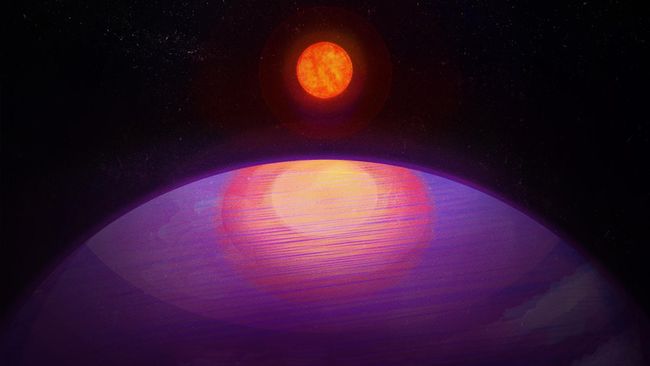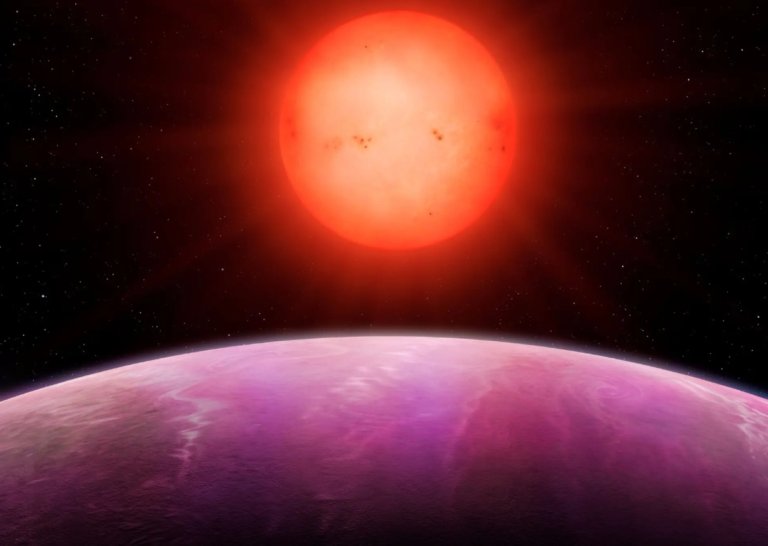This exoplanet, deemed ‘forbidden,’ exhibits a mass significantly exceeding that of its host star.
This finding emphasizes how limited our understanding of the universe is. The existence of a planet of this considerable weight around a star with such low mass is quite unexpected.

Astronomers have identified a massive extrasolar planet, labeled LHS 3154 b, in orbit around an ultracool dwarf star that defies expectations based on current models of planetary formation. This discovery challenges scientists’ understanding of the birth of planets and planetary systems.
LHS 3154 b, with a mass 13 times that of Earth, akin to the solar system’s ice giant Neptune, revolves closely around an ultracool dwarf star. The dwarf star is only nine times less massive than the sun, leading to a mass ratio between the Neptune-like planet and its host star that is 100 times greater than the mass ratio between Earth and the sun. This unprecedented finding, situated approximately 51 light-years away, represents the first instance of a planet with such significant mass identified around one of the universe’s smaller stars.
“This discovery really underscores how limited our knowledge of the universe is,” remarked Suvrath Mahadevan, co-author of the study and the Verne M. Willaman Professor of Astronomy and Astrophysics at Penn State University. “We wouldn’t expect a planet this substantial to exist around such a low-mass star.”
Challenging how stars and planets are born
Stars come into existence as immense clouds of gas and dust gather in regions with heightened density, eventually collapsing under their own gravitational force. This process results in the birth of a fledgling star surrounded by a residual material disk known as a “protoplanetary disk.”
As the name suggests, scientists believe that planets emerge from the remnants of this disk. The quantity of leftover material from the star’s formation establishes a constraint on the potential size of these emerging planets.
The research team found that LHS 3154 b possesses a planetary core of considerable mass, indicating that the planet-forming disk it originated from must have harbored a substantial amount of solid material. In essence, it implies a higher material quantity than current models would anticipate, as explained by Megan Delamer, an astronomy graduate student at Penn State and co-author of the study.
Consequently, the identification of this specific exoplanet introduces inquiries into star formation. This is because the ratios of dust-to-mass and dust-to-gas content in the original protoplanetary disk of LHS 3154 would need to be ten times greater than predictions to give rise to a Neptune-like celestial body as massive as LHS 3154 b.
“The planet-forming disk around the low-mass star LHS 3154 is not expected to have enough solid mass to make this planet,” clarified Mahadevan. “But it’s out there, so now we need to reexamine our understanding of how planets and stars form.”

The Habitable Zone Planet Finder is exceeding expectations
Mahadevan and his team identified the exoplanet LHS 3154 b using the Habitable Zone Planet Finder (HPF), an astronomical spectrograph situated at the Hobby-Eberly Telescope at the McDonald Observatory in Texas. HPF is specifically engineered to detect exoplanets in orbit around some of the Milky Way’s coolest stars.
The instrument, co-designed by Mahadevan and his team, has a primary focus on identifying planets within the habitable zone—neither too close nor too distant from their stars to support liquid water, a crucial element for life. These are planets positioned in the habitable zone around their stars, but spotting them proves challenging. The habitable zone for cool stars is much closer to these stars than in our solar system, leading to frequent obscuration by the relatively diminutive parent stars’ light. Moreover, these planets are anticipated to be relatively small, adding to the difficulty of detection.
Mahadevan explained the analogy, likening the star to a campfire. As the fire cools, one needs to get closer to stay warm. Similarly, if a star is cooler, a planet must be nearer to maintain sufficient warmth for liquid water.
“If a planet has a close enough orbit to its ultracool star, we can detect it by seeing a very subtle change in the color of the star’s spectra or light as it is tugged on by an orbiting planet.”
The identification of LHS 3154 b holds significance for HPF, showcasing the instrument’s capability to yield crucial exoplanetary findings. A team member and NASA Sagan Fellow in Astrophysics at Princeton University remarked that this outcome surpassed all expectations for the instrument.
Mahadevan concluded, “What we have discovered provides an extreme test case for all existing planet formation theories. This is exactly what we built HPF to do, to discover how the most common stars in our galaxy form planets and to find those planets.”
The team’s research was published on Nov. 30 in the journal Science.
Do not forget to share your opinion with us to provide you with the best posts !




0 Comments